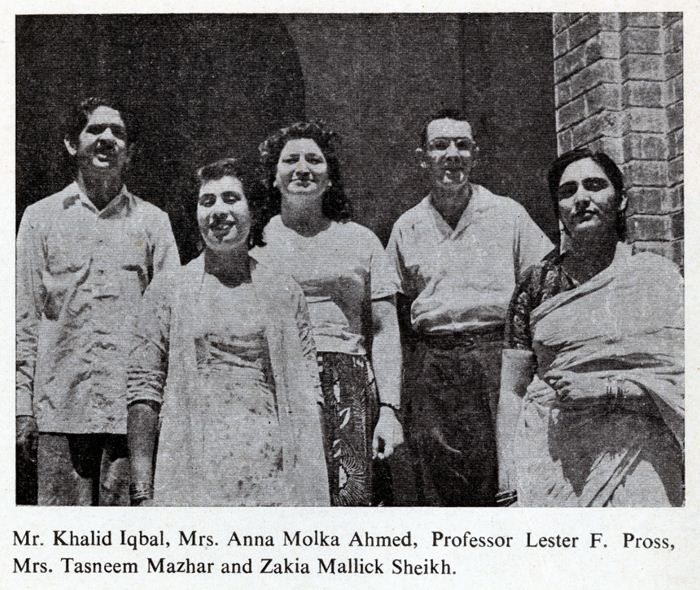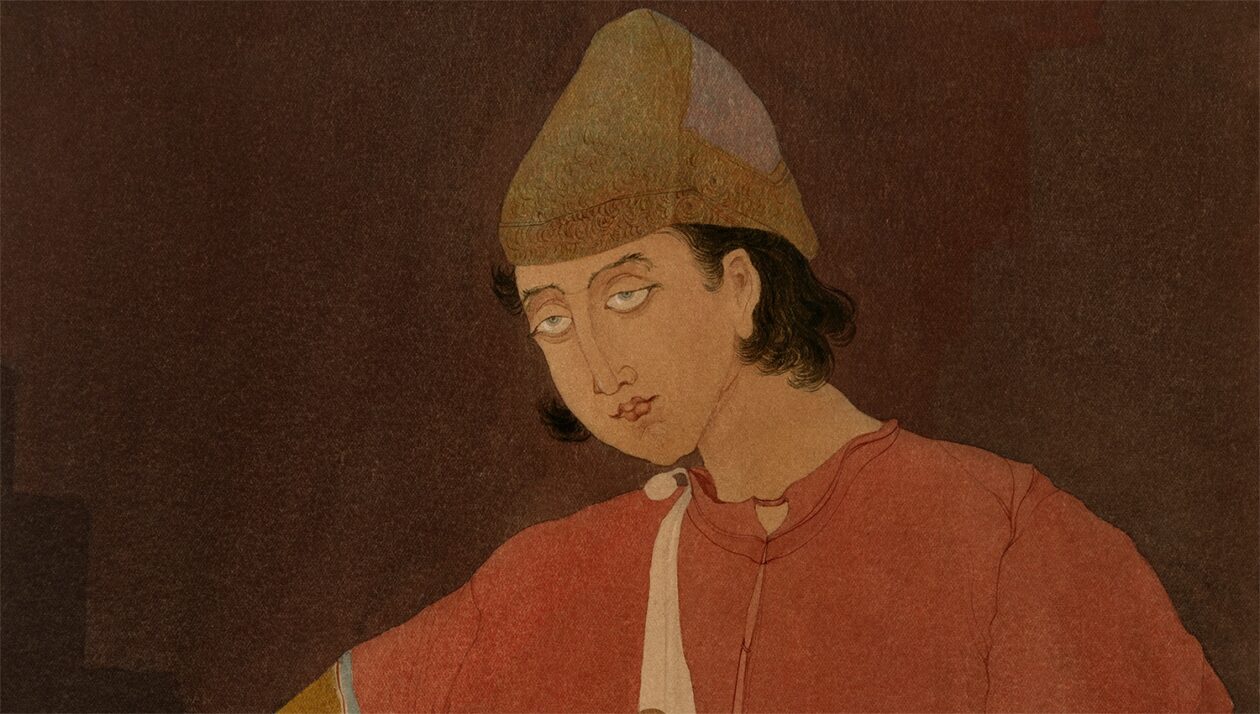TWO AMERICANS IN TOWN
DIRECTING FLOW OF ART EDUCATION
Pakistan climbs the bandwagon of the West

Professor Lester F. Pross of Berea College, Kentucky, USA entered Department of Fine Arts, University of Punjab with his own ideas of advancement. Dr Mark Buchanan of Washington, was supporting his theories about redirecting Art education in Pakistan. Sidney Spedding , Principal Mayo School of Arts, a British educationist was directing the formation of National College of Arts. The syllabi of both places were updated to world standards, and the student was to learn everything, about everywhere. The only taboo word in the syllabi was PAKISTANI ART. Both institutions were turning an absolute blind eye to Pakistani Artists, and the strange part is that not only there is no mention of Pakistani Art, even the Bibliographies do not mention any book on Pakistani Art. In English Medium Schools students were reprimand for talking in Urdu, in these two places the students were punished for even thinking about Art in Pakistan. The students were indoctrinated to align themselves to West, not with their own environment, and everything done here was dubbed as colonial in character. For them national artists were a legacy of colonialism, in contrast the very same artists fought against colonialism. And the interference was not merely verbal. In fact Sidney Spedding had submitted a written proposal to the Economic Planning Commission in 1954 to undertake this overhaul of system.
The NCA site records:
“Professor Mark Ritter Sponenburgh, the first principal of NCA, introduced the modern art college curriculum at the NCA, in 1958. The modern movement in Pakistani art had already begun with Professor Shakir Ali, teacher and principal at the NCA. The students of Professor Mark Ritter Sponenburgh spearheaded modern art education at the NCA, the first art college in Pakistan.”
On 29th December, 2012, the American was remembered here:
“A reference in memory of the late Mark Ritter Sponenburgh, the founder principal of NCA, who passed away at the age 95 at his home in Oregon, USA, was held at the National College of Arts.”
And strangely his background is listed amongst others as:
“In early 1942, Sponenburgh volunteered for the U.S. Army, assigned to Combat Intelligence Training and the Corps of Engineers as an instructor. After working in the cartography section, dictating and reproducing maps as the command prepared for D-Day, in 1945 he requested transfer to Monuments and Archives (G-5).”

Everyone is free to believe in issues and to practice them. We have no qualms about anyone’s action. But redirecting a compete nation away from home seems to me, having roots in some kind of bias, vested interests or perhaps even malevolency. But what we are to say? The result is obvious. A new breed of artists were created. There was no creativity spurring their imagination. Their utmost desire was to imitate everything done abroad. In this imitation they lost their identity completely. DOABI KA KUTA NA GHAR KA NA GHAT KA is a favourite saying used by many people. We won’t say that. We just say what was achieved with this ART GIMMICKRY IN PAKISTAN. The cohesion in the country was lost. The PICASSO DERIVATED ARTISTS died their natural death with Pablo Picasso.
With the import of Western Art traditions, there was import of Western campus values and which led to free license, which a Pakistani society could not have ever allowed. The culmination was the GHAZALA SANA RAPE CASE OF NCA, and strangely you Google same, and you won’t find a single reference to a most important case of our art history. Big names were alleged to be involved in same, and the Federation of Pakistan came to their rescue. But that is a place for another blog.

It actually started with Anna Molka (wife of Sheikh Ahmad) and Mary (wife of Roop Krishna) in 1941. More about that later!